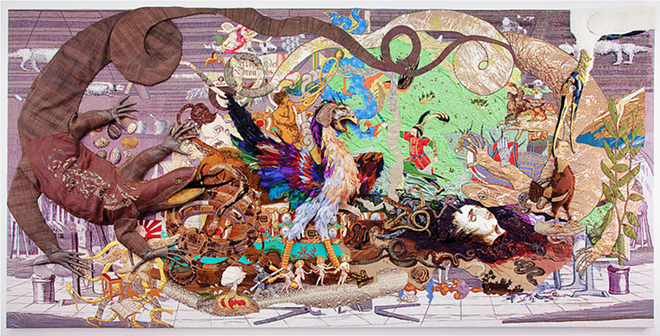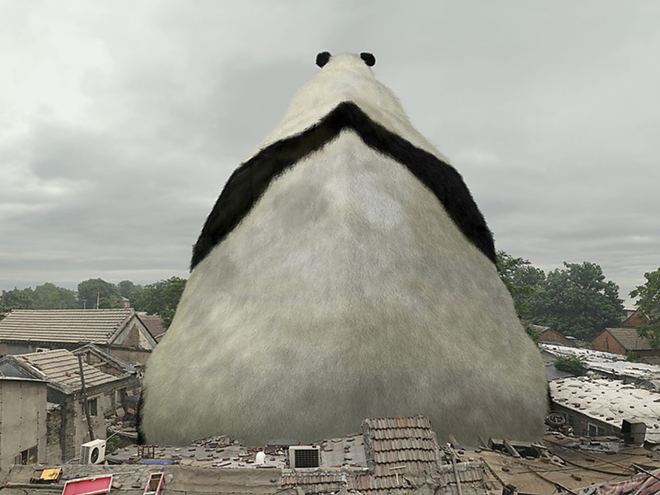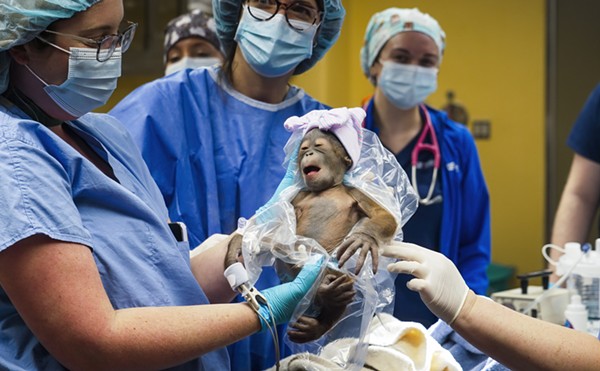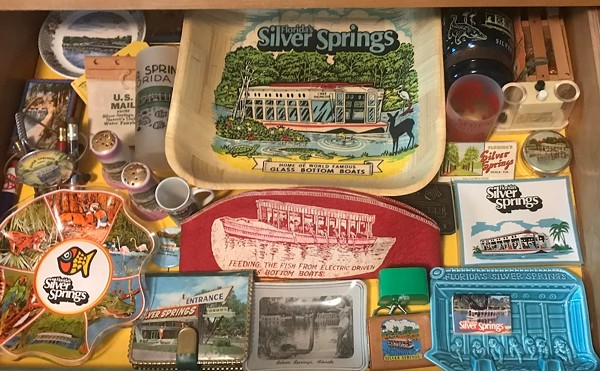
In her 2010 book The Wild, Wild East: An American Art Critic’s Adventures in China, Barbara Pollack describes a moment after a friendly argument with artist Ai Weiwei. The two are squabbling over the differences between American and Chinese cigarettes, and when Pollack later turns to the Internet to gather evidence for their next bout, she’s struck by the absurdity of her own cigarette nationalism. If a billion people are puffing on Chinese smokes, she reasons, who’s to say Marlboros are really better?
In her book, Pollack offers the story semi-jokingly as an analogy for coming to grips with contemporary art in China, where she began traveling and reporting in 2004. At home in New York, her work as an art critic had put her in contact with Chinese artists who lived in the city during the 1990s. When she arrived in Shanghai and Beijing, she realized those cites were on their way to growing communities of artists, galleries and museums that could rival art capitals like New York — and soon.
“It was really clear to me that there was going to be a major art scene erupting there, which is what happened by 2006,” Pollack says.
On Saturday, the Tampa Museum of Art and the Museum of Fine Arts, St. Petersburg, debut My Generation: Young Chinese Artists. The exhibition is curated by Pollack and showcases the fruits of her decade-long arts reporting in China, focusing on 27 artists born in the country since 1976, the year of Mao Zedong’s death. The idea for the show originated over a dinner party during video artist Janet Biggs’s 2011 solo exhibition at TMA. At the dinner, which followed a public conversation between Biggs and Pollack, museum trustee Sara Richter, upon learning about Pollack’s China research, suggested that her next project take the form of an exhibition for Tampa. After a 2013 trip to China with Pollack for studio visits with many of the artists who would end up being featured in My Generation, TMA director Todd Smith was convinced: the country’s burgeoning scene deserved a closer look in the U.S., outside of New York and L.A.
“It was revolutionary in terms of what I was able to see,” Smith says.
When a previously scheduled exhibition at TMA — the expansive Poseidon and the Sea, set to open next week — made space limited, Smith reached out to the MFA. Each museum will exhibit roughly one half of the show, which travels next to the Oklahoma City Museum of Art.
Pollack dubs the artists featured in the show YCAs, or Young Chinese Artists, after the generation of Young British Artists, such as Tracey Emin and Damien Hirst, whose sometimes-scandalous art called attention to London in the 1990s. Among the YCAs, who are all 37 years old or younger, you won’t find Ai Weiwei, Cai Guo-Qiang or Zhang Huan, artists in their late 40s and 50s who were the first to enjoy international success and today constitute, by comparison, China’s elder statesmen of contemporary art. (Ai, who has become an international cause célèbre living under house arrest in Beijing for his outspoken criticism of China’s government, will open a major project on Alcatraz Island in September.)
Unlike their predecessors, Pollack’s YCAs have grown up entirely since the end of the repressive Cultural Revolution, during economic prosperity ushered in by China’s Open Door policy toward foreign investment (initiated by Deng Xiaoping in 1978), and in most cases as only children under the country’s one-child mandate (active since 1979). If not exactly the equivalents of American millennials, they share at least a few characteristics as digital natives who are savvy consumers of global culture, accustomed to living well, and expressing themselves with relative freedom and a high degree of individuality. As a result, these younger artists tend to make works that speak a global language of art-making, in formal terms, and tackle issues of power and politics with humor and subtlety rather than the kind of head-on engagement with China that has often signified “Chinese-ness” in prior contemporary art, Pollack says.
“Even if they don’t look particularly Chinese, they’re addressing the issues that come from the unique set of circumstances that are going on in China today,” she says.
The exhibition is organized into five themes — family ties, gender roles and intimate relationships, urbanized landscape, reflecting on Buddhism, and gestures of rebellion — and includes painting, photography, video, animation, drawing, sculpture and installation. Chi Peng, 32, one of China’s few openly gay artists, appears in his own photograph of a naked man halted between glass-clad office buildings as miniature red airplanes whiz by overhead. Hu Xiaoyuan creates painstaking trompe l’oeil ink paintings of wood grain on silk directly on the top of unfinished pieces of wood, transforming humble materials that evoke construction site castoffs into ethereal art objects.
Last week at TMA, 37-year-old Jin Shan, who lives in Shanghai, was building “No Man City” (2014), a room-filling Tyvek sculpture that resembles a cross between a cathedral and an iceberg. The project is a collaboration of sorts with Jin’s father, who worked as a mural and sign painter during the Cultural Revolution. Onto the sides of the arctic-white structure, Jin projects shadows of motifs from his father’s art, like the tiger and the peony. China’s unofficial national flower, the peony is itself the subject of periodic, politically charged debate; Sun Yatsen favored the plum blossom.
To design the structure, which winks at Minimalism and imagined monuments such as Tatlin’s tower, Jin researched utopian architecture online, then built a cardboard model in his studio, convincing friends at a shoebox factory to fabricate the panels of the finished version, which is held together with aluminum rods. There’s something droll about Jin’s use of Tyvek, the frustratingly indestructible DuPont material used to make FedEx envelopes, to craft his “utopia house,” as he calls it.
“This idea of utopia always comes up and goes down, so I think it is in the human DNA,” Jin explains.
Across Tampa Bay at the MFA, Sun Xun, 34, stages a more dystopian vision. In an MFA gallery he paints the surrounding walls with a larger-than-life ink landscape dominated by a menacing insect, creating a backdrop for more than 20 of his drawings and three animations. Sun has produced the drawings at artistic residencies around the world — in India, Ukraine, Tokyo, Hong Kong and New York. In each place, Sun says, he takes the opportunity to observe a universal disconnect between the surface of politics, with its lip service to the people, and the machinations of political and military leaders. This bleak view plays out most dramatically in “21 Grams” (2010), a 27-minute animation comprised of frames shot from individual black-and-white drawings of people and desolate landscapes, introduced by a magician; the project took Sun more than four years to complete.
Sun seems to hope that political awakening is at stake for viewers of his work. During an interview, he offers that by observing people and politics around the world, it is possible to attain a “ruler of truth” by comparing cultures of deception. In this scheme, nations become surreal mirrors of each other, in the way that the U.S.S.R. and the U.S. spent the Cold War locked in an embrace of mutual identification.
“Now the mirror is China, but it’s a different mirror. I watch, and I use my art. It’s not art, it’s life,” Sun says.
Visual Art
My Generation: Young Chinese Artists
June 7-September 28
Tampa Museum of Art: Members-only preview Fri., June 6, 7-9 p.m. 120 W Gasparilla Plaza, Tampa, 813-274-8130, tampamuseum.org.
Museum of Fine Arts: Members-only preview Thurs., June 5, 6-8 p.m. Conversation with guest curator Barbara Pollack and MFA assistant curator Katherine Pill, Sun., June 8, 3-4:30 p.m. 255 Beach Dr NE, St. Petersburg, 727-896-2667, fine-arts.org.



















